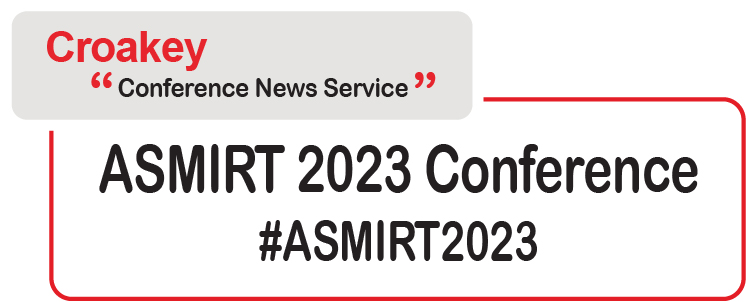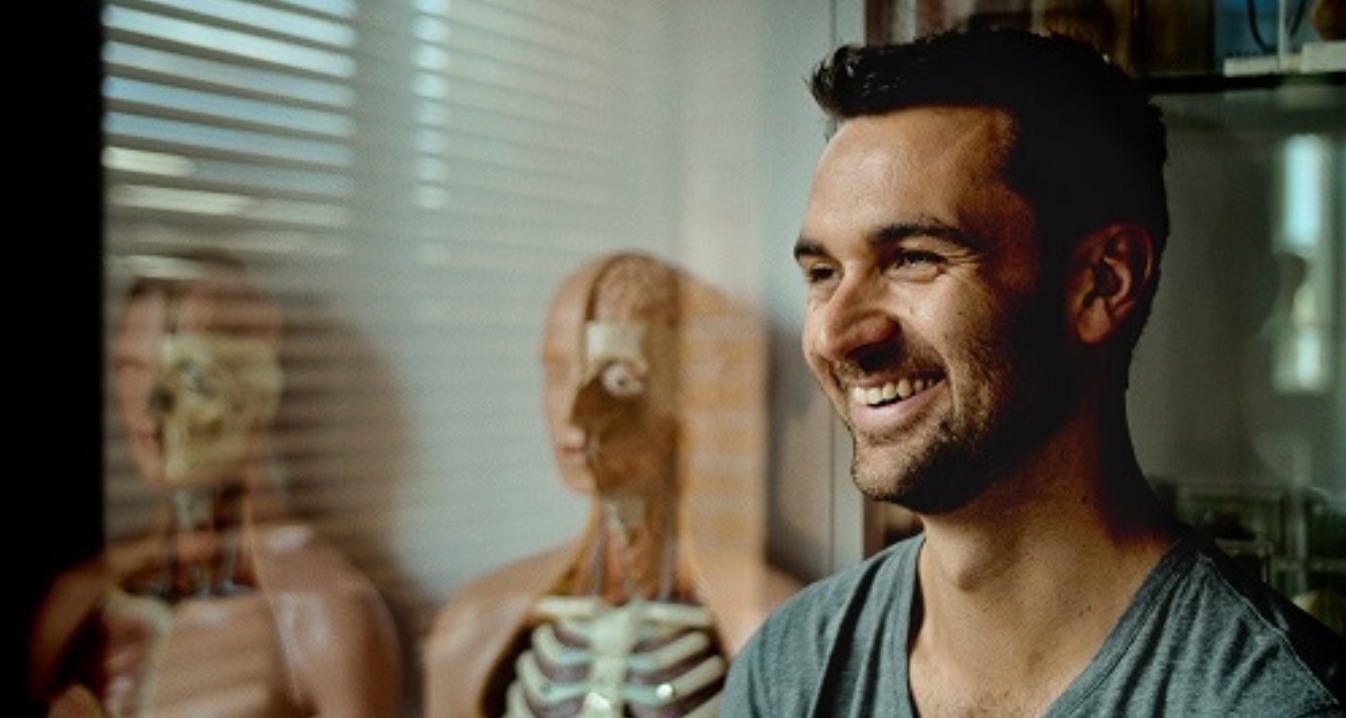Introduction by Croakey: The importance of patient-centred care will be highlighted at the Australian Society of Medical Imaging and Radiation Therapy (ASMIRT) conference later this month, as keynote speaker Dr Ben Bravery tells how his experience as a cancer patient led him into medicine and advocacy on better care for both patients and professionals.
The conference is being staged amid critical issues for medical radiation practitioners, ranging from declining graduate numbers and issues around scope of practice and research to the potential and risks of artificial intelligence (AI).
#ASMIRT2023 will run from 27-30 April for radiographers, radiation therapists and the wider medical radiation sciences community, under the theme: Champions of change: honouring the past, embracing the present, shaping the future. See the full program here.
Marie McInerney will cover the event for the Croakey Conference News Service. Bookmark our coverage here, follow the conference hashtag #ASMIRT2023, link to our conference Twitter List and follow @ASMIRTorg at our rotated Twitter account @WePublicHealth during the conference.
Marie McInerney writes:
Ben Bravery was a science writer and zoologist building a life and career in Beijing, when on a brief return to Australia in 2011 his mother talked him into having a colonoscopy to investigate some worrying symptoms.
At the time, he was just 28, fit and seemingly healthy. He had never had a serious illness, not even a broken bone, and there was no cancer history in his family. He thought he had haemorrhoids.
A diagnosis of stage three colorectal cancer launched him into 18 months of aggressive treatment that “quickly became my whole life”, undergoing radiation therapy, chemotherapy and surgery in a treatment regime that was riddled with all kinds of complications, he told Croakey.
At the end of it, Bravery was lucky: unlike many other young patients whose diagnosis does not come soon enough, he survived and has a good prognosis. But when he tried to go back to his old world, “things had shifted inside me,” he recalls.
Two things particularly left a mark.
Firstly, he was so grateful to be alive and to have benefited from Australia’s universal healthcare that he felt “a kind of compulsion to give back to healthcare”.
But he had also been shaken and disturbed by some of his experiences in the health and hospital systems, feeling scared, overwhelmed, sometimes invisible and often alone.
“While the technical care was outstanding, some of the human side of the care was often lacking,” he said. “It wasn’t necessarily bad individuals, it was a bad system,” he said.
Those two reflections prompted a life-changing decision for Bravery to study medicine.
Doing so only served to confirm his sense of the “divide between patients and doctors” and the need for the doors to medical school to be opened in a much more comprehensive way to a more diverse student group, including Aboriginal and Torres Strait Islander people, those from lower socio-economic backgrounds, and people with direct experience of disease.

Seeing medicine through another lens
Now a trainee psychiatrist, he has had the chance to view the system through another lens, seeing the pressures on doctors themselves.
“It’s patient flow, it’s volume, it’s after-hours policy, it’s bullying and harassment…it’s all of these things,” he said. “The system isn’t designed for people.”
Last year Bravery published a book,  The Patient Doctor: How one man’s cancer diagnosis led to a quest to put the heart back into healthcare, promoted as both memoir and manifesto, in a bid to “help both of the sides of healthcare better understand each other”.
The Patient Doctor: How one man’s cancer diagnosis led to a quest to put the heart back into healthcare, promoted as both memoir and manifesto, in a bid to “help both of the sides of healthcare better understand each other”.
He is gratified the book seems to have tapped into an “appetite for change” in the community and in healthcare. It’s made the best seller lists, his experience and insights have been featured across the mainstream and medical media, and he’s been a guest speaker in multiple health settings.
Later this month, Bravery will be opening keynote speaker for the Australian Society of Medical Imaging and Radiation Therapy (ASMIRT) at its biennial conference, leading the charge for multiple sessions on patient-centred care featuring a number of international experts.
Bravery has a particular story for the ASMIRT delegates, one that still makes him emotional.
It comes from his first radiography appointment, which involved a CT scan and having radiographers make pin-point tattoo marks on his skin, so they could line him up into the same position every day for the next 39 days of his treatment course.
It’s a funny story, the way he tells it, describing in detail a hospital gown that didn’t fit or behave and the need to keep his genitalia out of the radiation’s way while contorting the rest of his body in various ways.
But behind the laughs is a story about fear, discomfort and lack of dignity. It also highlights the importance of forewarning; in a relentless treatment cycle, he was “really not prepared for the exposure and the vulnerability”.
Looking back, Bravery says he can’t fault the technical expertise of the care he received, nor the professionalism of the radiographers in the room.
“But I felt like a cog in a machine.” It struck him that the actual everyday routine of healthcare “is a barrier to empathy”.
His message to health professionals from that experience is: “Your everyday is my worst day.”
Focus on patient journey
It’s a message the ASMIRT membership is very keen to hear, says conference convenor Johnathan Hewis, a senior lecturer in medical imaging at Charles Sturt University in Port Macquarie and chair of ASMIRT’s Advanced Practice Reference Group.
ASMIRT’s members — radiographers, sonographers, radiation therapists and nuclear medicine technologists — work with “very high-end technology, cutting edge science”, he said, and related clinical and scientific issues, including the growth of artificial intelligence (AI) in the work of the profession, will be on the agenda at the conference.
“It’s well recognised that some aspects of a journey into our space can be a bit mechanistic and dehumanising,” Hewis says, adding that this only got worse during the COVID-19 pandemic with staff robed in personal protective protective equipment (PPE) and having to be distanced, with loved ones unable to provide support.
Bravery’s opening address, and other sessions involving leading international practitioners and researchers on patient-centred care, are designed “to keep us focused on the person being at the centre of all we do”, he said.
UK researcher and diagnostic radiographer Dr Emma Hyde, who is Associate Professor of Diagnostic Imaging at the University of Derby and Clinical Director of the Personalised Care Institute, has been digging deeply into that patient journey in radiography and will present on her work at a number of #ASMIRT2023 sessions.
She recently co-led a large-scale national research project in the UK to define informed measures of patient-centred care in diagnostic radiography that included a revealing survey of clinicians, managers, and service users, testing application to a number of approaches to care — which could have served as a checklist for Ben Bravery’s experience.
They included:
- explanation of equipment, movement and noises
- exploring any difficulties the patient may have maintaining position
- action re any patient distress/anxiety before, during or after examination
- ensuring size and length of clothing appropriate (physical and cultural needs)
- providing dressing gown, blanket or other items to maintain comfort, privacy and dignity, and
- choice over lightings and other settings like music.
Hyde and her co-author reported frequent differences in the perceptions of care provided during an imaging examination among UK medical imaging technologists and managers versus service users.
“While all three groups saw technical skills as the fundamental foundation for patient-centred care, perspectives on other important factors differed,” they wrote.
“Service users prioritised information, care, privacy and dignity, and environment when describing care. In contrast, medical imaging technologists and managers prioritised examination efficiency as a core component of care, then information, care, and finally privacy and dignity.”
Hyde is now furthering this research, leading a large research program with colleagues from Queensland University of Technology, looking at perspectives about patient care in Australia, New Zealand and South Africa.
It’s the first study, she said, to compare perspectives on ‘good’ person-centred care in medical imaging between the Global North and Global South and, while data is still being analysed, she hopes to be able to share early findings at #ASMIRT2023.
She told Croakey she will also seek to get across three main points for patient-centred care:
- Use ‘Hello my name is’ to introduce yourself to everyone you image/treat, and start the interaction as equals, with dignity and respect.
- Consider ‘what matters to you’ – health professionals can be focussed on the systems/processes and forget the individual’s needs – ask what matters!
- Little things can make a big difference – an extra blanket or pillow, a pad under the knees, a reassuring touch on the shoulder, a conversation about the weather, can all make a huge difference to the person’s experience.
The conference will also hear on patient-centred care and a range of other topics, including AI and research, from plenary speaker Dr Christina Malamateniou, a former MRI radiographer, now senior researcher and Postgraduate Programme Director for Radiography at City, University of London.
She was hailed by her institution last year for pioneering an autism-friendly MRI scan, exploring the impact of the pandemic on radiography academics and practitioners, and leading research into creating ethical AI tools in radiology. (Croakey will report more on her work in upcoming coverage of the conference).
“Patient-centred care is a key clinical competency for radiographers and works seamlessly with the technical competencies; these two go hand in hand,” she told Croakey.
“As we are a caring profession, patient-centred care also massively contributes to our job satisfaction, and, therefore, to patient experience. A virtuous circle, if we get it right, a vicious one, if not.”
Perfect storm
#ASMIRT2023 will take place amid a challenging professional landscape: increasing demand, growing waiting times, the need for more complex imaging, calls for a new stream of research, scope of practice issues, and worries about recruitment and retention, with graduate numbers down last year to 647 from 1,100 ten years ago.
“It’s like a perfect storm,” said radiation therapist Bronwyn Hilder, immediate past president of ASMIRT and a workforce expert for the profession, saying it is having to look for internal and external solutions to address “a great increase in the complexity of treatments that we deliver, increasingly sophisticated machinery, [and] an increasingly complex patient cohort”.
The conference will have a strong focus on fundamental workforce and practice issues, including the relatively slow rollout of advanced practice in Australia compared with other places like the UK and Canada. It will end in a session looking at the medical radiation science practitioner for the future, which will feature some of the “rock stars” of the profession, Hilder said.
Professor Beverly Snaith, one of the first consultant radiographers in the UK and a trail-blazer in advanced practice, will also speak at a number of sessions. Snaith is also urging the profession to build its own research base, saying in a pre-conference interview that “we are still at the infancy in terms of confidence in using and generating our own evidence”.
The conference will also have a big focus on diversity, among patients and in the workforce, and will feature Dr Amanda Bolderston, co-founder of Canada’s Queering Cancer, whose doctoral research investigated the experiences of lesbian and gay healthcare professionals in practice.
Follow the conference news on Twitter at #ASMIRT2023 and via this Twitter list of presenters and participants.










